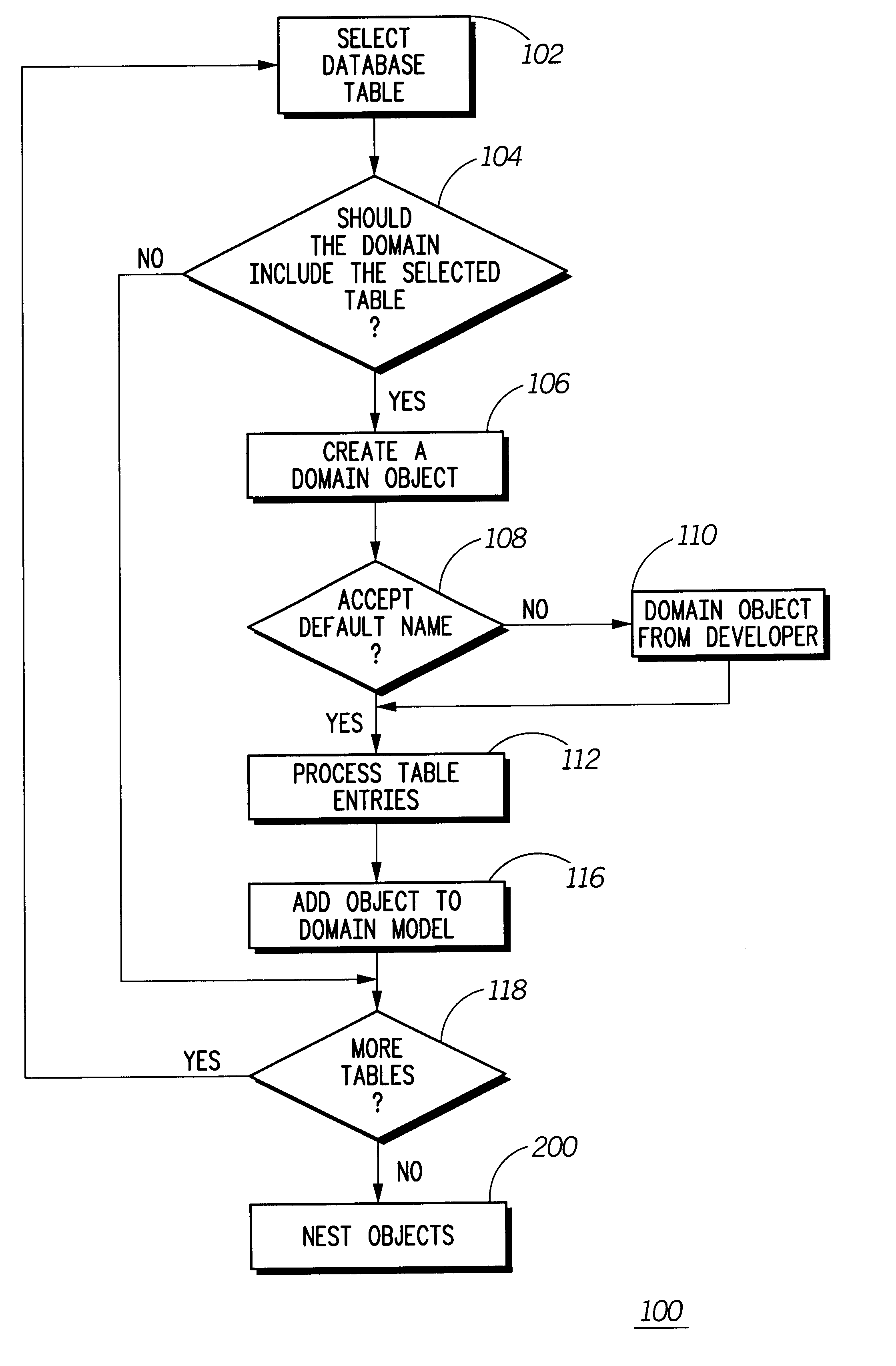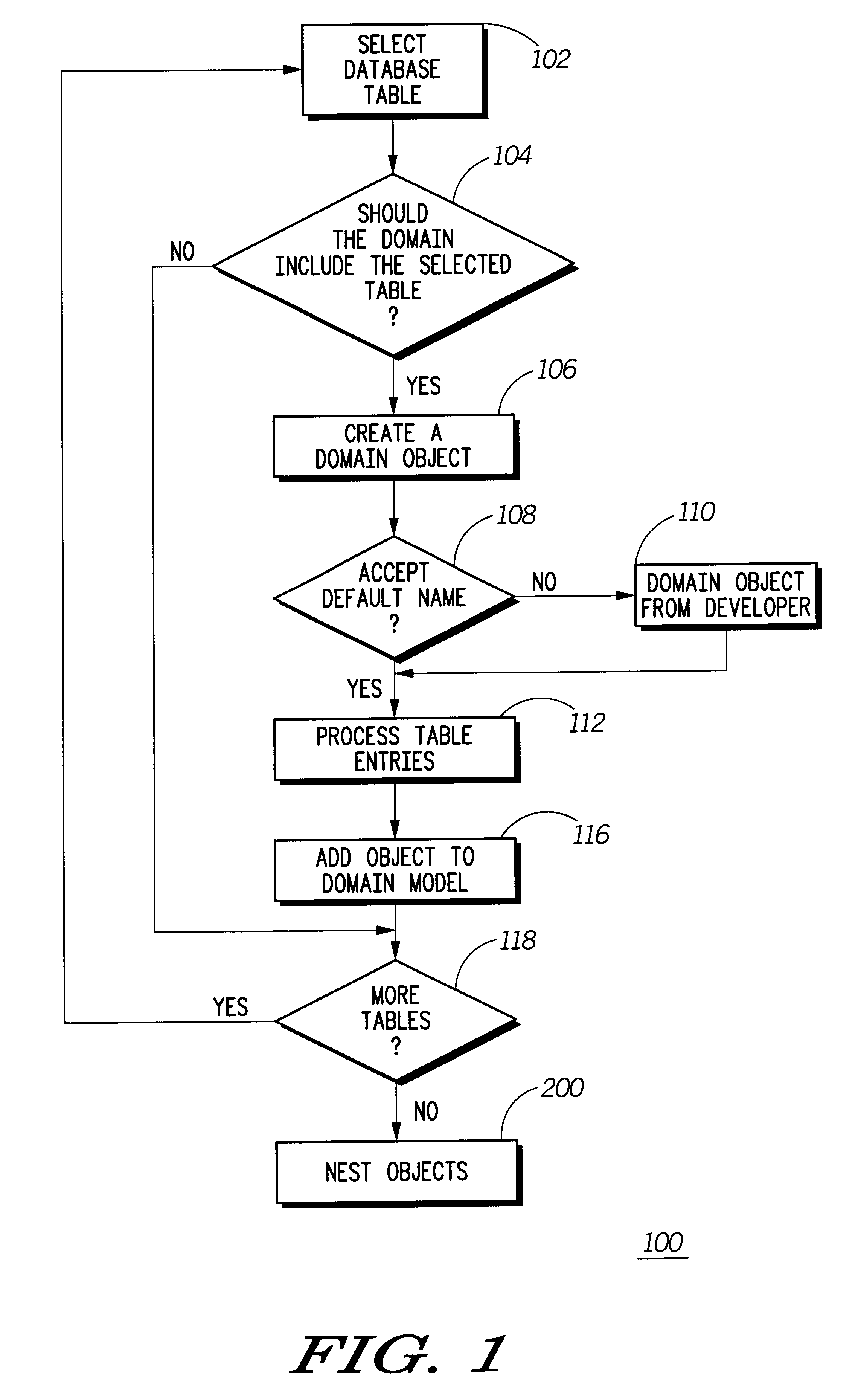Interactive tool for semi-automatic creation of a domain model
a domain model and interactive tool technology, applied in the field of domain model creation for natural language dialog systems, can solve the problems of difficulty in obtaining experts, requiring substantial time and specialized expertise, and all methods requiring a substantial amount of expert's tim
- Summary
- Abstract
- Description
- Claims
- Application Information
AI Technical Summary
Problems solved by technology
Method used
Image
Examples
Embodiment Construction
The present invention is a system, method and program product that allows any person, regardless of their level of domain model creation expertise to create a domain model from a given domain specification. The domain specification may be in the form of a relational database or Application Programming Interface (API). The domain specification contains information available to the preferred embodiment system regarding an application domain but, does not necessarily reflect a human expert's conceptualization of that information. The domain specification may contain functional elements, such as what are referred to as "bridging" tables in a relational database, that have no correlation in the real world but, only exist to facilitate database look-up. Typically, relational databases include only attributes that are string or integer values, each requiring an arbitrary identifier to relate one object to another. Thus, the domain model may include attributes with arbitrary nesting of comp...
PUM
 Login to View More
Login to View More Abstract
Description
Claims
Application Information
 Login to View More
Login to View More - R&D
- Intellectual Property
- Life Sciences
- Materials
- Tech Scout
- Unparalleled Data Quality
- Higher Quality Content
- 60% Fewer Hallucinations
Browse by: Latest US Patents, China's latest patents, Technical Efficacy Thesaurus, Application Domain, Technology Topic, Popular Technical Reports.
© 2025 PatSnap. All rights reserved.Legal|Privacy policy|Modern Slavery Act Transparency Statement|Sitemap|About US| Contact US: help@patsnap.com



